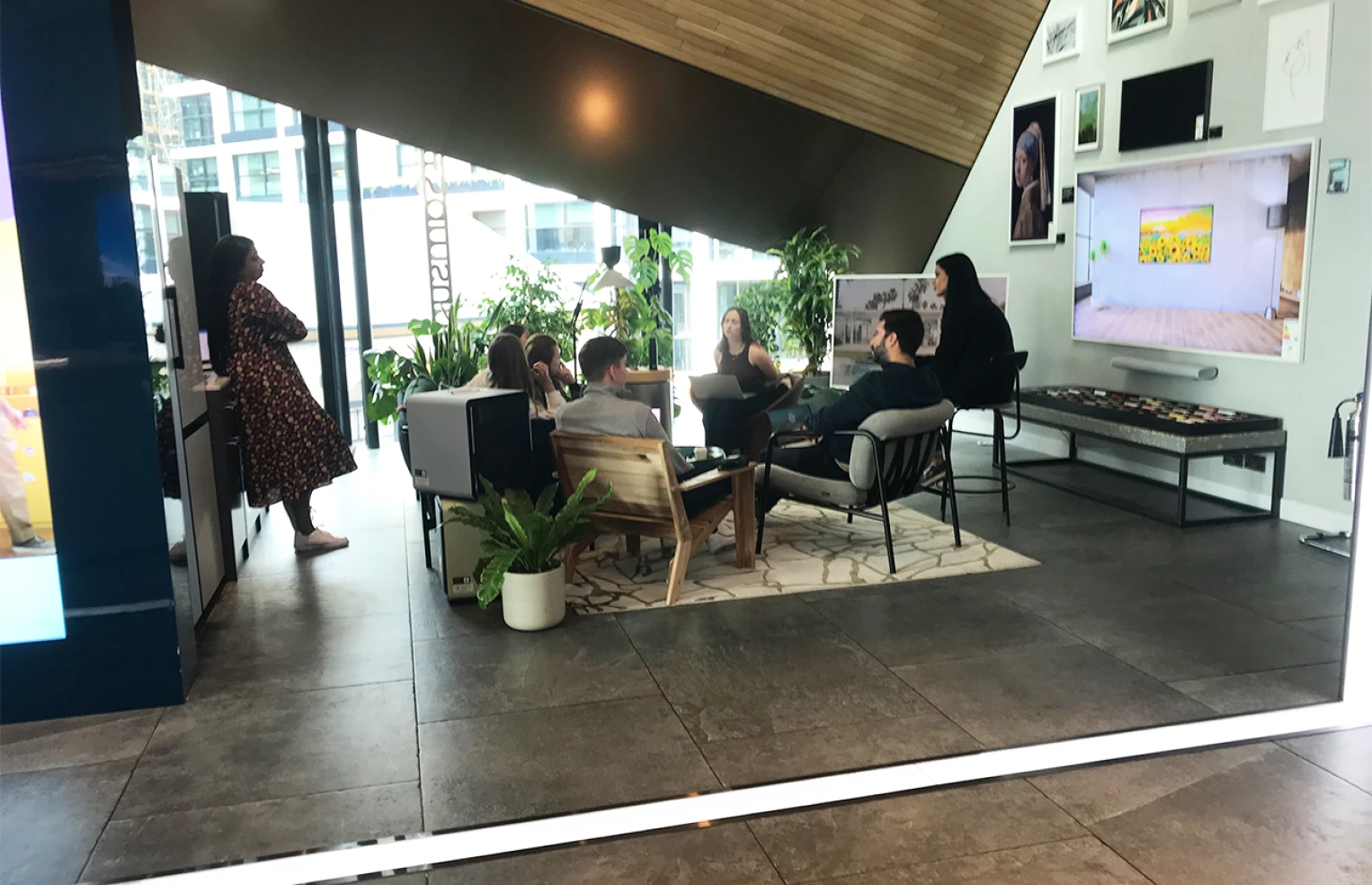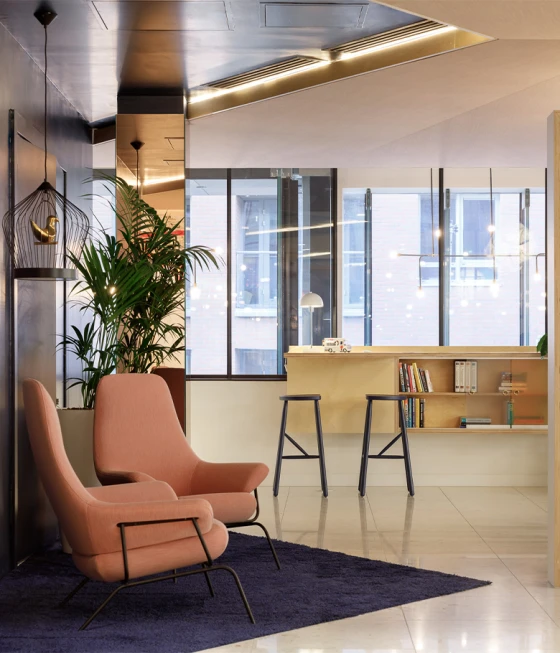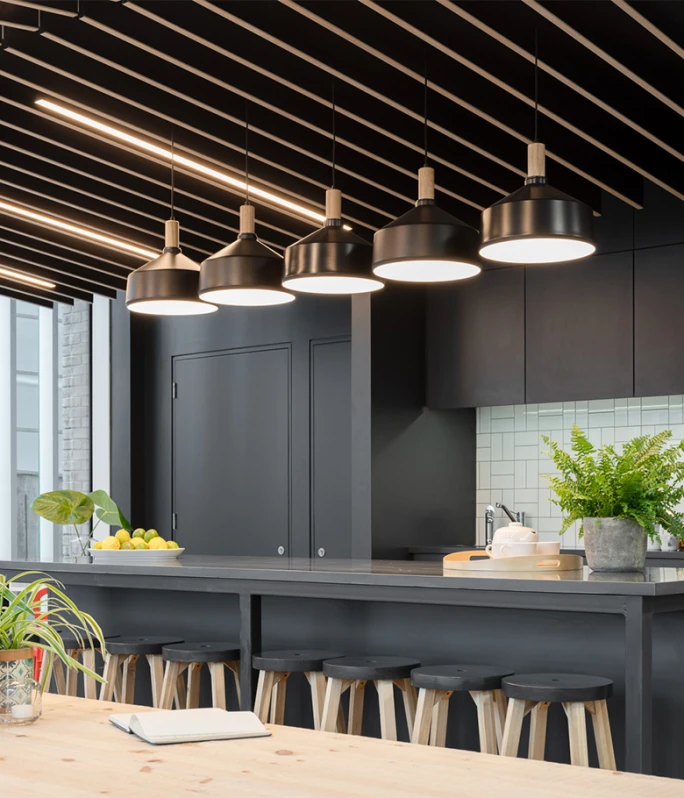Udemy, Dublin. Creating contemplative spaces which provide space for relaxed informal gatherings and space for impromptu meeting-ups.
Designing Workspaces That Really Work
Insights
Our Nitro, San Francisco Collaboration. Concept sketch of entrance.
For a long time, the idea of working from home was a total impossibility for the vast majority of people.

Samsung. The Coal drops, London. “This is not a shop”.
But then, of course – Covid happened. Workers everywhere were dragging their office chairs and desktops into the back of taxis to bring home and try to negotiate the new challenge of remote working.
But then, of course – Covid happened. Workers everywhere were dragging their office chairs and desktops into the back of taxis to bring home and try to negotiate the new challenge of remote working.
Used to occupying an office with a server, a printer, a scanner, comfortable chairs and so on, the idea of coping from home seemed insurmountable. For some, however, things worked out. As for us? We got out our sketch rolls, sharpened our pencils and did what we do best. Zoom calls and contact with our colleagues and clients proved doable. We presented, had design sessions online and got on the best we could.
There were some perks to this new way of working. We suddenly had a quieter, more intimate space. Space to focus, with our favourite barista right around the corner. These perks were undeniably great. Why would we ever go back to our large, open-plan floor plate to be bombarded with questions, with nowhere to escape to, and try to get a day’s work done?
However, the fact remains: Humans are social. Face-to-face engagement is everything. Sometimes things get missed on Zoom calls. A quick meeting can be a catch-all, or even better it can lead to more natural problem solving and new ideas. The remote workplace has highlighted the value that an office space can provide, and that it can lend a healthy perspective to its users.
Some of these could be noted as:
Some of these could be noted as:
Positivity
Collaboration
Team celebrations
Meaningful contributions
A sense of connection


Nitro, Dublin. “recreating domestic intimacy”
Humans look for an emotional connection when staying in a hotel or dining in their favourite restaurant. It’s how a space talks to you, guides you from place to place, allows you to seek out quiet more contemplative spaces as well as participating in more animated scenarios.
Workplaces are now looking to take some of the comfort cues from the hospitality sector as they seek to offer, now more than ever, immersive environments for their employee’s engagement and experience. Statistics are showing that after the pandemic companies performing best and whose teams are willingly back in the office are placing love at the centre of their employee’s experience.
In hindsight, we spend more time at work than we do anywhere else, so it is vital to create environments that people are proud of, somewhere where they feel their real needs have been considered. As designers, it is essential that we listen to our clients and understand their needs and desires. Numbers, adjacencies between teams, individual requirements, facilities. That’s a given and that's the easy bit.
But more than that, we endeavour to create environments that inspire people to do well, to want to be there, to work together, to do well collectively as a business. Often clients have a wish list, which is great for us: Showers, a bar, meeting rooms, a gym. Our job is to understand what really happens around these spaces and how people engage with them and how often they will really be used. Design not fit for purpose and real meaningful engagement will just be a dust trap.
When our clients have a request, it is our job to ask: What happens here? How will your employees engage with it? How is your current space used and where are the real pain points? Where are teams and individuals going to break away to and recharge momentarily? Is this a more contemplative space?
It is only when we have tried and tested these elements that we start carving up spaces, introducing lighting concepts, narratives, textures, sounds and the temperature throughout. These are all important ingredients, contributing to meaningful human experiences. After all, that’s what it is all about. And the question now is, is the era of the large open plan office space coming to an end?